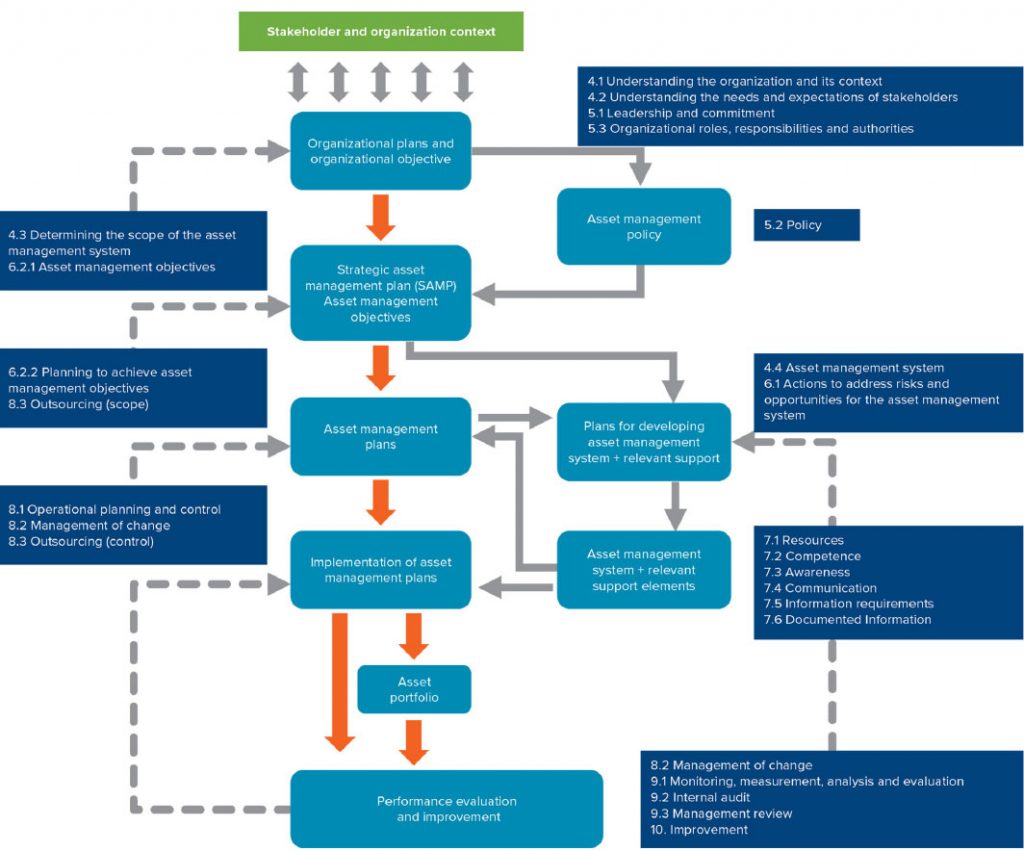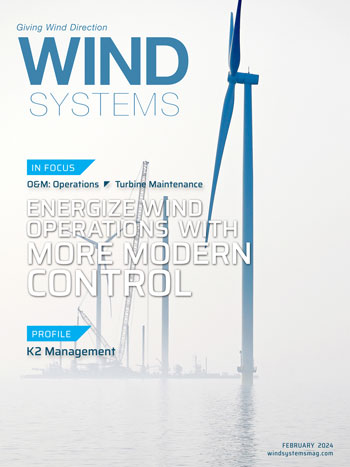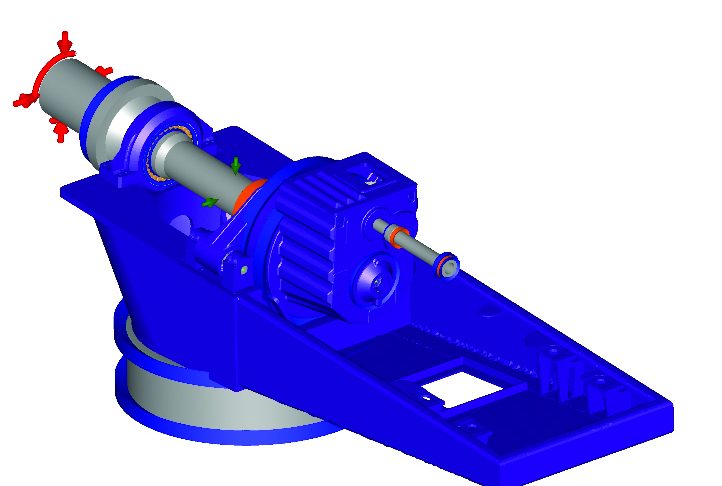Asset maintenance first hit the headlines during the late 1980s when it became a target for efficiency improvements throughout the process and chemical industries globally. Initiatives at the time focused upon traditional methods of improvement, reducing the numbers of staff and trying to work smarter with fewer resources. Despite these cuts, the pressure remained for asset managers to continue to reduce costs and increase efficiencies.
Has much changed? We believe much has improved. However, we’re faced with a new era in managing risk with scope to achieve far more. The benefits of combining asset integrity and reliability programs are a major approach for today’s operators of capital intensive, high-risk equipment and infrastructure including offshore wind, although the offshore wind industry is relatively new to the United States, while offshore-wind installations have been operating for more than 20 years in other parts of the world.
Based on our experience in auditing, assessing, and helping improve asset integrity and asset reliability programs, we’ve seen how organizations tend to develop and implement these two programs separately. The release of ISO 55000 Asset Management Standards and the increased implementation of ISO 55000 programs is now creating an industry-wide movement toward holistic asset risk management.

Broadening the Spectrum of Managing Risk
Asset integrity and reliability programs can help to address a broad spectrum of asset risks, including operational, environmental, and regulatory risks. There are also similarities between asset integrity and reliability programs in how effective they are at identifying safety-critical equipment and structures and asset criticality, as well as feeding into management systems and reliability business practices with the use of today’s asset data and data management systems.
Typically, an organization’s asset integrity program focuses on compliance with regulatory requirements, while their reliability program efforts focus on equipment and structural reliability and maintenance efficiency. With few exceptions, we have not seen organizations combine asset integrity and asset reliability programs to create a holistic asset management program.
There likely have been several motivations for maintaining and viewing these programs separately, such as:
- Desire/concern of regulator actions relative to combined programs (e.g., regulator holding an organization accountable for reliability program activities).
- Seemingly competing objectives and goals of different organizational groups (e.g., asset integrity group, reliability group).
- Potential understanding/viewpoint that regulatory and business performance requirements need to be managed differently.
- Lack of understanding of potential efficiencies and benefits of combining these two programs.
The primary objective of both asset integrity and reliability programs is to proactively perform asset maintenance activities to reduce the likelihood of asset failures, and the overall objectives are nearly identical. One of the primary differences, however, is the type and risk level addressed by these two programs. Asset integrity programs focus on managing high-consequence events affecting safety and the environment that occur at a lower frequency, while reliability programs focus on lower-consequence events (including economic events), which often happen at a higher frequency.
While some may argue these programs are managing different risks and for some equipment or structural failures this may be true, there is likely more commonality than often first realized. For example, the high vibration of a reflux pump (discovered via a reliability vibration analysis program) may appear to be a reliability issue, but the unexpected failure of this pump could result in an over-pressurization of the tower and activation of a safety system that many would classify as a process safety management (PSM) near-miss.
Likewise, there are organizations that do not consider a leak (loss of containment) in piping as a reliability issue. In reality, leaking equipment often results in downtime (or other production impacts); therefore, leaking equipment is unreliable equipment.
This concept of an asset management program that addresses a broad spectrum of risks is not new and is provided in BS ISO 55000 series, Asset Management. One of the aspects required by this ISO standard is to identify key stakeholders and then identify each group’s risk. An obvious application of this requirement would be to include all safety risks (process and occupational), environmental risks, economic risks, and other operational risks. This standard then outlines requirements for asset management programs that address all identified risks. Holistic asset management can begin by combining asset integrity and reliability programs into a single framework.
 Blending asset integrity and reliability programs
Blending asset integrity and reliability programs
Synergies between the two approaches relate to managing the risks associated with asset degradation and failures. There are also many synergies at the program design, implementation, and execution levels of these two programs. A key aspect of both programs is the implementation of management systems (the commonly used term in the process safety world) or business processes (the commonly used term in the reliability world). Asset management systems define the overall asset management policies and objectives and the systems and processes needed (who, what, and how) to implement the asset management policies and achieve the program objectives.
ISO 55001 addresses the elements of an asset management program (the “what”) and ISO 55002 provides specifics regarding the “how” of the asset management program. Figure 1 shows the relationship between key elements of an asset management system.
Most holistic reliability programs include their management teams in core elements, such as work management, inventory management, equipment and structural maintenance plans (e.g., predictive and preventive maintenance plans), and computerized maintenance management system (CMMS) implementation.
So, what are the common attributes between ISO-55000, asset integrity, and Reliability program management systems?
When we look at Table 1, we can see how we can leverage and integrate activities from these three programs with a few examples of the common elements from each of these three programs.
While the strategic and conceptual similarities between Reliability and asset integrity programs are interesting, the important synergies are related to the tactical activities that influence the day-to-day implementation of these two programs.
Synergizing Examples
If we consider a few examples of potential synergy between asset reliability and asset integrity activities – for example a process pump (in a hazardous service), it includes common reliability activities such as operator walks (visual inspection) and vibration analysis. Both of these practices are also asset integrity related activities as they help to detect and prevent loss of containment events. Another example is instrumentation and control system reliability practices, such as periodic sensor calibration and functional checks. When these practices are applied to safety-critical instruments and controls (e.g., safety instrumented systems), asset integrity requirements are incorporated.
Take the example of asset integrity practices for fixed equipment, specifically a pressure vessel. The common practices would include API-type inspections and testing such as visual inspection and pressure boundary thickness non-destructive test (NDT). Leaks in pressure vessels during operation can result in unplanned downtime (which is a reliability impact).
Also, these API 500 (American Petroleum Institute) inspections and tests help predict the end-of-life for these equipment items, which allows for planning and proactive equipment replacement (which is a reliability issue). There are also common reliability practices related to managing the heat exchange fluid (e.g., cooling water) condition and/or periodic cleaning of heat-exchange surfaces. These activities can reduce the shell and tube thinning/degradation and lower the probability of a process safety event (e.g., loss of containment).
Asset Data
A key area between asset integrity and reliability programs is asset data management, where both programs require compilation, verification, and management of asset data to be effective. This data management effort involves developing a master asset list and then populating this list with relevant asset related data.
Master asset lists typically involves (1) reviewing the P&IDs and structural arrangement drawings (to identify assets), (2) compiling asset information from engineering, maintenance, operational, etc., files and records, (3) performing field walk-downs to verify the asset list and collecting missing data, (4) establishing the master asset list and data in the data management systems, and (5) organizing and associating the relevant data (e.g., drawings, original equipment manufacturer (OEM)) in the data management systems.
While the steps for developing the master asset management list for asset integrity and reliability purposes are similar, each program has slightly different data needs and sources based on equipment and structure type.

In addition to the slightly different data needs for asset integrity and reliability programs, two data management systems are typically needed to store the asset data and manage the programs. These two systems are (1) the CMMS and (2) the inspection data management system (IDMS). While these two data management systems have many similar attributes, they are used for different purposes and operate differently. The CMMS is a software application that helps maintenance organizations manage their maintenance activities in one place. The CMMS provides a platform to manage the data around your maintenance operation, including preventative, predictive, and reactive maintenance.
Having accurate and complete asset data is crucial to building a CMMS, not least of which is having the ability of the CMMS to communicate with other software systems within the organization (e.g., IDMS).
The CMMS system also serves as a repository for implementing, executing, and improving maintenance work processes (work, asset lifecycle, maintenance, repair, and operation [MRO] inventory, etc), which drive the activities and dictate how maintenance is performed.
The IDMS is used to track and manage asset condition over time to determine future inspection and testing schedules. The software system uses equipment condition assessments (e.g., thickness data) to calculate rates of degradation (e.g., corrosion) to assess the expected remaining life of the asset before failure. Additionally, the IDMS can be used to calculate the current and future risk of assets in order to optimize inspection and test plans (e.g., Risk-based Inspection [RBI]). These inspection and test plans (e.g., type of activity and due date) are sent to the CMMS for scheduling and execution planning. This transfer of information is either performed manually (e.g., plans are manually transferred from one system to another) or digitally (e.g., information is automatically transferred).
When inspection and testing results are uploaded to the IDMS, recommendations that require corrective actions to resolve equipment deficiencies are sent to the CMMS via work order for execution/tracking, and then ideally the CMMS communicates back to the IDMS when the action is completed to satisfy regulatory recording requirements.
A change of mindset — motivating the drive for combining asset integrity and reliability programs
Organizations that do combine their asset integrity and reliability programs typically achieve tangible and intangible benefits. The tangible benefits relate to efficiencies in asset cost and programs, such as:
1) Reducing unplanned downtime: Implementing both asset integrity and reliability asset management plans and executing the plans as scheduled reduces both losses of containment and functional asset failures.
2) Reducing planned downtime: Both asset integrity and reliability asset plans include the implementation of activities related to assessing asset condition e.g., thickness monitoring (asset integrity related activity), vibration monitoring (reliability-related activity). Once implemented these types of activities reduce the need for intrusive activities (which then require assets to be offline), and help predict capital/operational expenses associated with asset replacement.
3) Program efficiencies: Combining the programs reduces the level of effort needed to develop and maintain program operational activities such as asset lists, maintenance work instructions, asset management plan execution, asset deficiency process, etc. The use of different work processes, data systems, etc. to operate the asset integrity and reliability programs results in duplicated efforts.
In terms of intangible benefits, there are several organizational and cultural benefits, including:
1) Program confidence: A combined program provides the key organizational stakeholders (e.g., plant management, executive management) with more confidence that regulatory compliance requirements are being met; asset failure risks are being managed; and holistic asset conditions are known and being managed.
2) Program view: Creating a “single source” of the asset integrity and reliability provides program executors, plant management, and executive management with a single view of the asset management program.
3) Improved program direction: Combining the programs can reduce confusion within the organization (e.g., which system needs to be followed) and provides clear, unified expectations for the asset management program.
The bottom line is that combining the asset integrity and reliability programs can reduce the cost of asset maintenance and help reduce the perception that the asset integrity program is only a cost. Also, the intangible benefits allow organizations to move from viewing the asset integrity program as a burden to the view that both asset integrity and reliability programs make business sense.
Tomorrow’s View
In today’s environment, companies need to be able to also make high confidence asset integrity decisions, enabling them to increase the profitability and productivity of the asset base while minimizing the exposure to the risk of catastrophic events. Failure to do so will allow competitors to gain a significant lead with regulators, financial markets, stakeholders, and profitability. In the future when things go wrong, questions will be asked – and in contrast to the past, it is likely there will be a requirement for greater accountability of individuals and organizations and transparency on their processes.

































